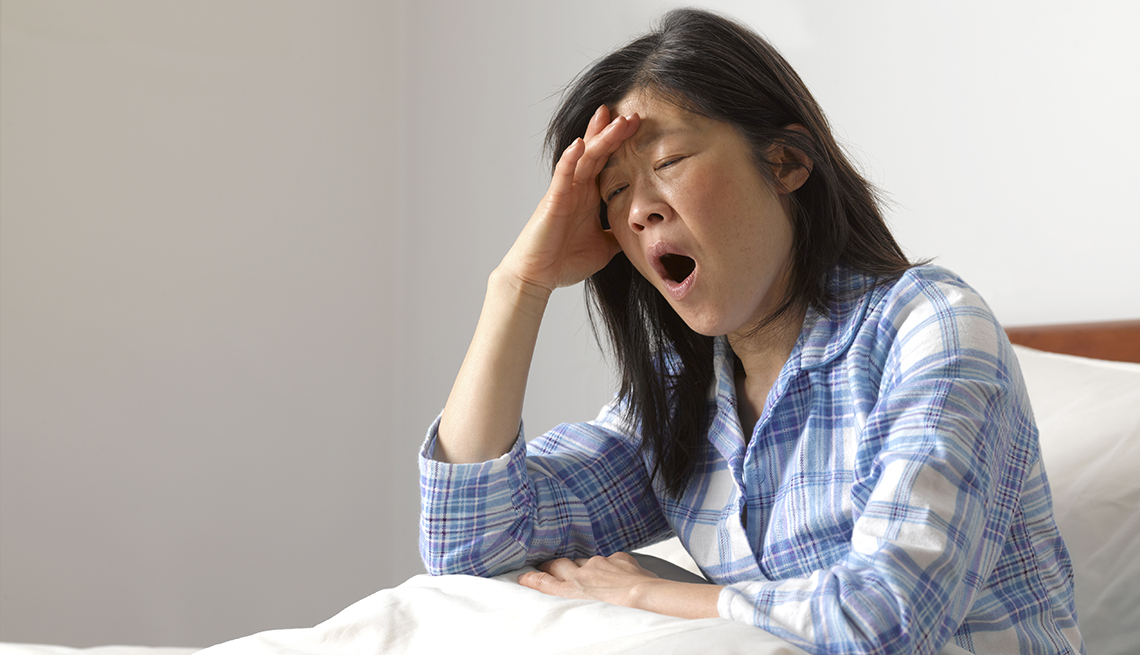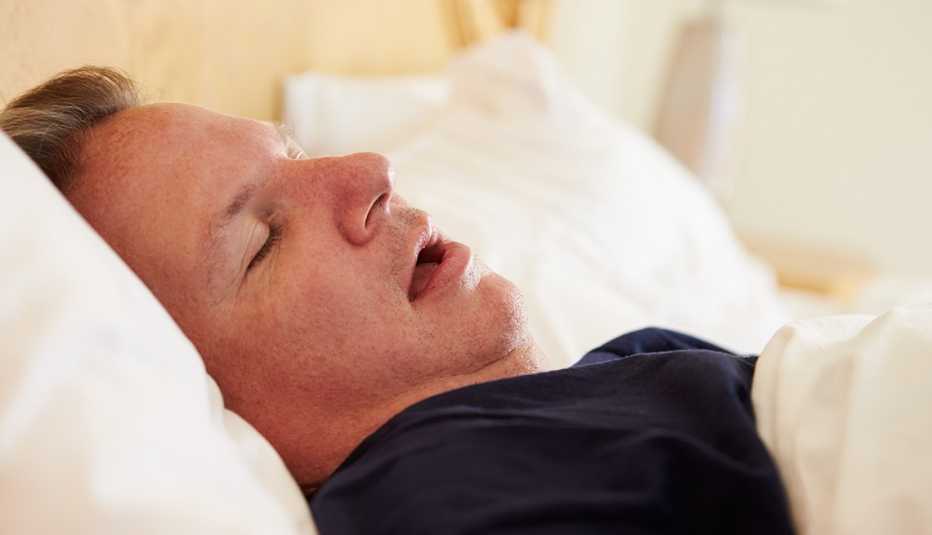Staying Fit
Sleep apnea — a condition in which breathing during sleep continually stops and starts — is common as you age. Research shows that up to 20 percent of older adults experience it — and many don’t know they have it.
A 2018 study published in the Journal of the American Geriatrics Society found that while over half of all people 65 and older are at high risk for sleep apnea, only about 8 percent were tested for it.


AARP Membership— $12 for your first year when you sign up for Automatic Renewal
Get instant access to members-only products and hundreds of discounts, a free second membership, and a subscription to AARP the Magazine.
One reason may be that sleep apnea symptoms tend to be more subtle in older adults. “When we think of sleep apnea, we think of people snoring, but that’s not always the case,” says Adam Sorscher, M.D., sleep health director at Alice Peck Day Memorial Hospital in Lebanon, New Hampshire. “As we age, fat tissue replaces muscular tissue in the throat and neck. This causes our airways to become more collapsible.”
When this happens during sleep, it makes it harder to breathe, cutting off oxygen to your body — and causing a host of other symptoms beyond the all-too-audible one. Untreated sleep apnea has been linked to high blood pressure, type 2 diabetes, stroke and heart attack. Research even shows that older adults with sleep apnea are more than twice as likely to die prematurely than those who don’t have it.
Here are six warning signs to look out for:
1. Uncontrolled high blood pressure
Up to half of all people with hypertension (or high blood pressure) also have sleep apnea, according to the American College of Cardiology. “Every time someone with sleep apnea has a pause in their breathing during sleep, their sympathetic nervous system becomes activated and their blood pressure spikes,” explains Meir Kryger, M.D., a professor emeritus of sleep medicine at the Yale School of Medicine in New Haven, Connecticut.
Your body also releases stress hormones, which can raise blood pressure. “A red flag is what we call resistant hypertension, which means that you can’t get your blood pressure under control despite being on at least two high blood pressure medications,” Kryger says.
The good news is that when these patients’ sleep apnea is diagnosed and treated with continuous positive airway pressure, or CPAP — a machine that uses mild air pressure to keep airways open during sleep — their blood pressure usually improves.
2. Morning headache
About 30 percent of people with sleep apnea report having a headache when they wake up in the morning. It’s unclear exactly what causes the headache, though it may simply be due to decreased oxygen in the blood that occurs each time you gasp for breath, as well as dilations of blood vessels in your brain to try to compensate, says Beth Malow, M.D., director of the Vanderbilt Sleep Division at the Vanderbilt University Medical Center in Nashville, Tennessee.







































































